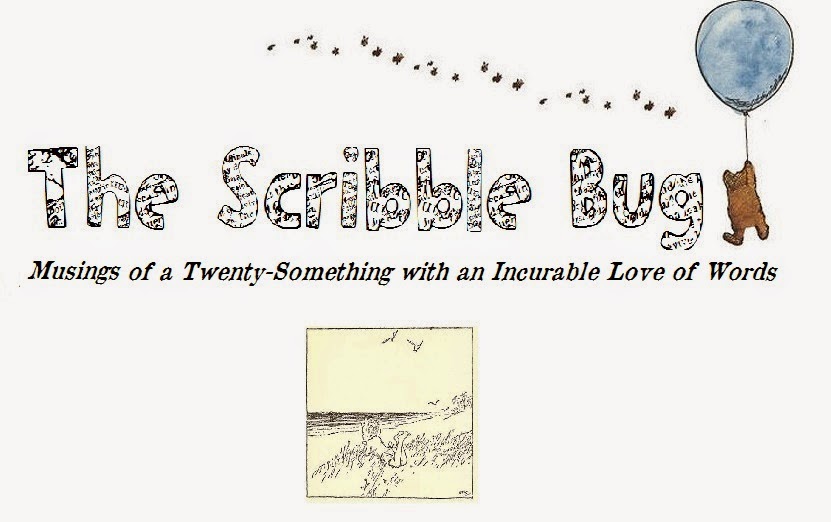Scare Tactics
‘Fear’ as a Successful Communications Tool
The value of emotion in selling products, and papers, is more or less indubitable.
Christmas: every advert pulls on the heartstrings. Headlines about fairness and altruism pepper the pages of our newspapers.
February: roses are red, violets are blue and romance is in the air for every marketing campaign and headline that can possible squeeze in an iota of an excuse for doing so.
Yet this is not just a gimmick of once-a-year holidays. It is a strategic part of brand narratives from McDonalds to Nike, Virgin to Jack Wills.
And one of the most effective emotions is fear.
Take as an example the full-sized polar bear released in London this past January. It disrupted tube-commuters’ usual routine of ‘studiously minding own business and ensuring zero eye contact with anyone’ with a potential panic attack.
“Is it real?!” People begged the cameras recording their mixed reactions of fear and curiosity.
Twitter went crazy. Videos and photos spread across the Internet.
I love the part
were the girl says "is it real??" : Polar Bear Roams London
[Sky Atlantic, Fortitude]: http://t.co/mn05nnCdca via
@YouTube
—
TheAnswer (@AtTheAnswer) February
2, 2015
As a stunt it grabbed headlines – partly because a giant white bear on the Jubilee line makes a great photo – but it also embodied the new television show it was publicising, Fortitude, by using a bear that is something of a sinister motif for danger in the show to create a similar threatened feeling in the British pubic. Moreover, considering Sky’s current adverts saying ‘not all television is created equal’, which suggests their programmes are somewhat more challenging, more intriguing, this stunt certainly seemed to capture hearts and minds with a comparable emotive thread.
An ‘Emotion Factor’ constitutes a central part of helping a consumer to bond with a brand, a business, a product, a person.
Hardly a new concept, Dale Carnegie identified emotions as key for business people who want to appeal to their customers back in 1936 and it has been linchpin in communications of all kinds ever since. There are books dedicated to it, and academic studies.
Those who have never watched Mad Men might be forgiven for wondering then why I’m talking about fear. Almost everyone has been told sex sells as demonstrated by Davidoff cologne or Virgin Atlantic adverts. Many will have experienced how feeling empowered makes that totally unaffordable car sound like a good idea, or how humour makes one website seem simpler and friendlier than the other.
But to quote Don Draper: “Advertising is based on one thing: happiness. And do you know what happiness is? … It’s freedom from fear.”
The same applies in building a narrative in public relations.
Telling a story for a business is an integral part of PR because it’s all about looking for the story that will bring a brand’s message to life. A story can build or bulldoze a reputation, manage or frustrate consumers. So whether it’s through a message, a logo, a CEO or even a product, telling a superficial tale is not going to win over a busy journalist or capture the attention of a digital audience. Only a quality, sophisticated story can do that. Preferably one that’s succinct and can fit into the required column inches.
"What you call ‘love’ was invented by
guys like me to sell nylons." – Don
Happy Valentine's
Day, #MadMen
fans. pic.twitter.com/RQX1IwMAD5
—
Mad Men (@MadMen_AMC) February
14, 2015
This is where fear comes in. Good stories need an element of fear. Something for a hero to overcome. That hero might be the consumer or the product or the business as a whole. But if all is happiness, simplicity, friendliness, and humour, what’s the point in being a hero, of wanting more than this? How can you feel powerful driving that car, or sexy travelling on that flight, or clever because you chose this brand, if there’s nothing to fear?
Nike do this well, painting the consumer as both hero and villain. Their base, lazy self doesn’t want to wake up, to run, to push up that hill. Can their strong, inner hero win out? Yes they can. Likewise, the anti-bank narrative taken up by new financial technology (fintech) companies often paint themselves as ‘Jack’ characters going up against fearsome ‘Giants’. A traditional story becomes a strategy rooted in the potential to conquer fear.
By identifying what seems scary, the opportunity to expose ways to overcome the monster emerges. This encourages people to believe in the story, to come to their own conclusions and hopefully align their opinions with that of the brand. Since they value this self-made deduction more than those shoved down their throats, the business’ story then becomes their story. Loyalty is created. A reputation with consumers established.
Crucially different from the fear inspired by some political propaganda or scaremongering, it’s important to note that this kind of fear is also distinct from manipulation. Using fear is not a way of coercing consumers into falling for a web of lies. It is, however, a means of a businesses connecting on a human level with the people it needs to connect with and a way of cohering a brand with both left-brain ideas and right-brain emotions.
So whether it’s by tapping into the fear of missing out, the reality of heart disease, the creepiness of unseen germs, or just the Very Dangerous World – businesses need to really start thinking about what people fear and what story they want to tell in the age of anxiety.
Je serai poète et toi poésie,
SCRIBBLER

